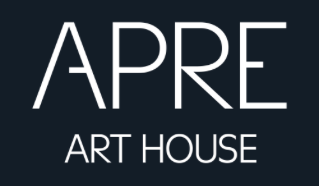
Aternate Gaze
Curated by Georgina Maddox
Date: 28th Sept. - 2nd Oct., 2024
The focus of this exhibition, titled Alternate Gaze, is to uncover and give a platform to ways of seeing that quote, what we can now call the feminine gaze—one of empowerment and evocation of an alternative to the male gaze. The female gaze is a feminist theory term referring to the gaze of the female spectator, character, director or artist, of an artistic work.
Feminist theorist Laura Mulvey suggests in her writing that, “In their traditional exhibitionist role women are simultaneously looked at and displayed, with their appearance coded for strong visual and erotic impact so that they can be said to connote to-be-looked-at-ness.
Woman displayed as sexual object is the leit-motif of erotic spectacle: from pin-ups to strip- tease.” If one were to apply this to visual art, as in painting, sculpture, photography and new media art, then perhaps a similar critique of the visual codes that regulate male viewing of the female form may be applied in Modern and Contemporary Visual art. It has been argued that more than the gender of the individual artist, it is an issue of representing women as subjects having ‘agency’ that is important and defining. As such both genders can create art with a female gaze and one may read it as an informed or spontaneous response to feminist film theorist Laura Mulvey's term "the male gaze", which represents not only the gaze of a heterosexual male viewer but also the gaze of the male character and the male creator of the film.
In that sense it is close, though different, from the Matrixial gaze coined in 1985 by Bracha L. Ettinger. In contemporary usage, the female gaze has been used to refer to the perspective a female filmmaker or in this instance a visual artist who employs a different view from a male gaze of the subject.
Cinema and art in the current digital age is no longer the monolithic system based on largecapital investment. This is best exemplified by Hollywood in the 1930'S, 1940'S and 1950's in the West and by Bollywood in the Indian context where the gaze of the camera and of artistic endeavors was essentially male. Forthwith technological advances (16mm, etc) and further digital ability to capture images in both cinema and new media art have changed the economic conditions of image production, which can now be artisanal as well as capitalist. Thus it has been possible for an alternative image representation to develop.
In the contemporary art context this gaze that we hope to unravel is perhaps not a fixed one, it is one that moves from subjects that are complex in their representation, one that provokes a response that is an alternative to one where the subject is converted into an object of visual pleasure and eroticism, stripped of its own power to evoke and be active. Lately, more and more women and even men with an alternative gaze or sexuality have been pushing back in regards to the male gaze.
Today actresses and models are taking to the news and social media platforms asking for their bodies not to be Photoshopped to be skinnier (which is all the rage right now in the Western culture). More and more women are standing up against body shaming on both fronts. Ronni Knepp the author of the piece Male Gaze In Contemporary Art suggests, “My proposition to help curb the male gaze and stereotypes of the "ideal female" is to take the power back ourselves. Create works of art that show our bodies as they naturally are, and support each other accordingly. I'm not aiming for any nutritional arguments here, given that there are of course health risks to obesity as well as eating disorders. Perhaps if we started loving our bodies the way they are with stretch marks and everything else... then we can help to adjust or even delete the male gaze entirely.”
While it may be a far reach to actually control the male gaze at source, given that art, cinema and media reach out to a variety of gazes, one can definitely control how women are represented from the creator of the image, so that it does not cater to the baser instincts of a gaze that reduces aesthetic beauty to easily consumable fetish.
Text By Georgina Maddox


